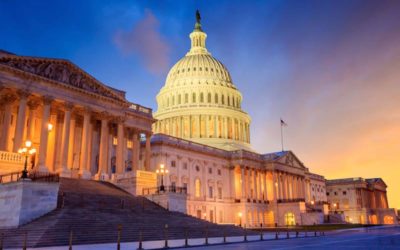Small businesses may apply for a forgivable loan under the CARES Act. The funding from the federal government for these loans is limited. Learn more below:
1: What can I spend the loan proceeds on?
A: The loan proceeds may be spent on payroll costs, including:
- Salaries
- Wages
- Tips or similar compensation
- Health insurance
- Dental insurance
- H.S.A. contributions
- Retirement plan contributions
- SUTA
In addition to payroll costs, up to 25% of the forgivable amount may be used for rent, personal property leases, interest, and utilities.
You absolutely cannot spend the funds on non-qualified expenses during the eight-week period following the loan. Using the funds for non-qualified expenses during this period following the loan could result in fines, penalties, and potential jail time.
2: Utilities are included as a qualified expense. Which utilities qualify for reimbursement?
A: There is not additional guidance as to which utilities will qualify for loan forgiveness. We anticipate the traditional utilities of: gas, electric, telephone and water will qualify. It is unclear whether cell phone bills or other utilities will qualify. In order to qualify, the expense must have been subject to a contract as of February 15, 2020.
3: When does my forgiveness period start?
A: The forgiveness period starts on the date the loan is funded. Your lender has up to 10 days to fund the loan once it is approved by SBA. Expenses paid and incurred starting on the funding date are eligible for forgiveness.
4: What happens to expenses that straddle the forgiveness period, for example, payroll paid during the forgiveness period but related to the prior period?
A: The CARES Act allows for loan forgiveness for payment of those expenses “paid and incurred” in the forgiveness period. Without further guidance related to this treatment, only expenses that are both paid and incurred will count for forgiveness. If your payroll includes dates that were before your loan was funded, but is paid within the forgiveness period, you will need to allocate the payroll between days prior to funding and after funding to determine which expenses are eligible for loan forgiveness.
The same methodology would apply to other expenses, such as utilities, interest, and rent. You may have received funds in April, but the April rent would not qualify for an expense unless it was paid after the date the proceeds were received. Similarly, utility bills are often paid the month after the charge is incurred, and would only count for those expenses paid and incurred after the loan was funded.
We anticipate further guidance in the coming weeks to clarify the “paid and incurred” language in the law and resolve the many issues created by this language.
5: Can I prepay expenses at the end of the eight-week period so they are both paid and incurred in the eight-weeks?
A: Guidance has not been issued on this topic, but based on the CARES Act, you would be able to move up the payment of those expenses incurred in the period, but not yet due. For example, moving the payroll date up to account for all the days in the period. Please note, moving your payroll date will likely require advance notice to your employees.
6: How do I determine the forgivable amount of the loan?
A: The forgiveness is based on the amount of the funds spent on eligible expenses, as well as a Full Time Equivalent (FTE) count. The FTE count is based on a ratio of the average FTE per pay period for the eight-weeks after the loan date, as compared to the average FTEs from either the period from 2/15/19 – 6/30/19, or the average FTEs from the period 1/1/20 – 2/29/20. Additionally, the CARES Act specifies, if the total FTEs at 6/30/20 have been restored to the previous levels, the loan will be eligible for 100% forgiveness.
There is also a reduction dollar-for-dollar for any employees making less than $100,000 annually who are reduced in pay by more than 25%.
7: How do I determine my FTE count?
A: It is unclear from the guidance whether an FTE will be based on 40 hours, 30 hours, 36 hours, or some other figure. Various government models are based on differing amounts, and we do not know at this time how the FTE count will be calculated.
8: What does it mean to restore the total FTEs by 6/30/20?
A: Based on the literal reading of the law, this would mean your FTE count is the same or higher at 6/30/20 as it was for either the period from 2/15/19 – 6/30/19 or the period from 1/1/20 – 2/29/20. Currently, there is not guidance related to how long the FTE count must stay at this level or whether the FTEs at 6/30/20 need to be the same level of employees as the measurement period.
9: My eight-week loan period ends before June 30, 2020. Could I lay off my employees during the eight-week period, and bring them all back on June 28, 2020 and still be eligible for loan forgiveness?
A: The literal reading of the law would allow you to bring back all employees by June 30, 2020. However, if many employees are laid off during the eight-week period of the loan, it may be difficult to spend the entire corpus of the loan because payroll costs would be low.
10: Up to 25% of the funds can be spent on non-payroll expenses, how do I measure 25% of the funds?
A: The law states up to 25% of the funds forgiven may be used for non-payroll expenses. In order to measure the 25%, you first need to determine what percentage of your loan will be forgiven. This may be difficult to determine before the end of the loan.
Example: If your loan is for 100,000 and it becomes fully forgivable, you would be eligible to reimburse expenses for non-payroll costs of up to 25,000. However, if it is determined only 80% of the loan is forgivable, then the non-payroll costs reimbursed would be limited to 20,000.
11: How do I determine my lease expense?
A: Your lease expense is based on leases entered into before February 15, 2020 and subject to the limits described in the previous question.
12: How do I determine interest expense?
A: Include interest on any debt for obligations entered into before February 15, 2020.
13: How should I pay non-payroll expenses out of the loan if I do not know what my forgiveness will be?
A: You may need to wait until closer to the end of the eight-week period, or until more guidance is issued, before determining the amount of non-payroll costs that can be paid from the loan proceeds.
14: Do I need to pay the expenses directly from the loan proceeds or can I “reimburse” myself at a later date?
A: There is not clear guidance on this topic, but it seems a clear tracing of the funds for reimbursable purposes will be sufficient to illustrate that those funds were used for the correct purposes.
Example: You may not want to pay your payroll directly out of the loan proceeds account because your employer FICA is not an eligible expense so only a portion of the payroll expense would qualify. You may want to continue to pay payroll as normal and then “reimburse” yourself for these costs. Likewise, you may not want to pay rent directly from the loan proceeds because you are unsure whether the entire amount will be eligible for forgiveness.
15: My business is currently shut-down. Do I need to pay my employees even though they are not working?
A: You may be able to restore your FTE count by June 30, 2020 (see numbers 8 and 9 above) and not have to pay your employees while they are not working, but would need to spend the money on payroll costs in order for it to be forgivable.
16: If my loan is fully forgivable, what is my out-of-pocket cost for my employee payroll?
A: You will be out of pocket for your employer share of FICA, 7.65% of the total payroll.
17: Could I bring my employees back for the last week of the forgiveness period and pay them a bonus for coming back to cover the payroll expense?
A: There is no guidance suggesting an employer could not pay the employees a bonus for returning to work. The maximum to be paid for any individual for wages in the period is 15,385. However, there is not guidance as to any other compensation upper limits.
18: Do new employees count in my FTE count?
A: Yes, new employees would count in the total FTE count.
19: I am not going to be able to spend all of the funds on employee wages, can I make a retirement plan contribution for my employees to spend the remaining amount of the funds?
A: There is no guidance suggesting an employer cannot fund a retirement plan contribution to account for any remaining funds and have it count as a payroll expense for the calculation. In funding the loan, there were not limits on the amount of benefits for employees, there were only limits on the amount of wages for employees.
20: Can I reduce employee hours or employee pay and still be reimbursed for my expenses?
A: You may reduce employee pay by less than 25% and still be eligible for full forgiveness. However, if you reduce the pay for any employee who makes less than 100,000 annually by more than 25%, your loan forgiveness will be affected dollar for dollar related to that reduction.
21: How do I account for the loan proceeds and expenditures on my financial statement?
A: We recommend you include the loan on your books as a short-term liability, similar to any other loan. Pay your expenses as you normally would and include those on your income statement as you ordinarily would. Once the forgiveness is determined, record the debt forgiveness income as an extraordinary item. The loan forgiveness is a tax-free forgiveness.
22: How do I track the expenses, if I am not offsetting them on my income statement?
A: We recommend tracking your expenses outside of the financial statement using an excel spreadsheet or other detail accounting of expenses. If you would like to use Smith Schafer’s template, it is available by clicking the button below.
23: Should these funds be kept in a segregated account?
A: Yes. We recommend the PPP proceeds are kept in a segregated account. Pay your expenses as you ordinarily would and reimburse yourself for the expenses. For example, if you have an account only used for payroll, continue to pay your payroll costs out of this account. Determine the amount eligible for use from the loan proceeds, and then reimburse yourself for those expenses. A careful tracking and tracing of these funds is essential.
24: What documentation is required for the reimbursed expenses?
A: At a minimum, payroll reports and payroll tax returns is required to illustrate qualified expenses. Additionally, cancelled checks may be required for certain expenses. We recommend keeping copies of all receipts paid and reimbursed.
25: I am a sole proprietor with no employees, how do I document “payroll costs” to myself?
A: When you apply for loan forgiveness, you will include an amount equal to 8/52 of the 2019 Schedule C income, limited to 100,000 and this will be automatically forgiven. Related maximum forgiveness for your payroll costs is $15,385. There is no additional documentation required at this point.



